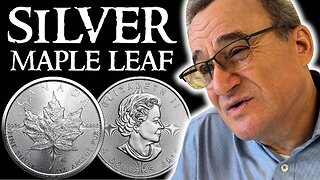Premium Only Content

Get This Report on "The History and Evolution of Cuban Food"
Cuban cuisineCuban food is a combination of Spanish, African, and Caribbean effect, leading in a special blend of flavors and active ingredients. The history of Cuban meals dates back to the appearance of the Spanish in the 16th century when they offered brand-new plants such as sugarcane, citrus fruit products, and spices to the isle. These new components mixed along with native foods like yucca and plantains to create a distinctive cuisine that has progressed over opportunity.
The early years of Cuban food items were greatly influenced through Spanish food. The Spaniards brought along with them their food preparation techniques and dishes which were conformed to fit local area components. One example is arroz con pollo (rice with hen), a meal that stemmed in Spain but was conformed through Cubans using regional seasonings such as saffron and oregano.
In the 18th century, African slaves were delivered to Cuba to function on sweets haciendas. They took with them their personal culinary traditions which featured recipes produced along with okra, black-eyed greens, and yams. These elements were incorporated right into Cuban dishes over opportunity leading in recipes such as moros y cristianos (black beans and rice) which is still popular today.
The 19th century saw an increase of Mandarin immigrants who brought their own cooking techniques and elements such as soy products dressing, ginger root, and noodles. This led to the creation of recipes like arroz frito (panned fry rice) which is a staple in Cuban-Chinese restaurants today.
In the mid-20th century, Cuba experienced a revolution which possessed an impact on its food items society. Several wealthy Cubans fled the nation taking their cooking practices along with them while those who remained had to adjust to supply and lacks of particular foods like meat product. This led to an increase in vegetarianism on the isle.
In recent years there has been restored interest in traditional Cuban dishes both within Cuba itself as effectively as abroad. Gourmet chefs are exploring with new ways to offer timeless meals, and there has been a rise in the attraction of road food items such as fritas (Cuban-style cheeseburgers) and churros (seared cash pastry).
Some well-known Cuban meals feature ropa vieja (shredded meat hash), lechon asado (roast pork), and picadillo (ground meat along with tomatoes and olives). These meals are usually provided along with rice, dark grains, and plantains. Treat like flan (custard) and arroz con leche (rice dessert) are also typically took pleasure in.
In final thought, Cuban food is a representation of the island's complicated past history and assorted social influences. Coming from Spanish pioneers to African slaves to Chinese migrants, each group has left its mark on Cuban food resulting in a abundant tapestry of tastes and elements. Today, the recognition of typical Cuban cuisine proceeds to grow both within Cuba itself as well as abroad producing it an crucial part of the country's social heritage.
Cuban cuisine is a fusion of Spanish, African, and Caribbean impact, leading in a one-of-a-kind blend of flavors and elements. The background of Cuban food items dates back to the appearance of the Spanish in the 16th century when they launched new plants such as sugarcane, citrus fruit products, and spices to the island. These new substances mixed with native foods like yucca and plantains to make a unique dishes that has advanced over opportunity.
The very early years of Cuban meals were intensely affected through Spanish food. The Spaniards delivered along with them their cooking food approaches and dishes which were conformed to satisfy local area components. One example is arroz con pollo (rice with hen), a dish that emerged in Spain but was adjusted by Cubans using nearby spices such as saffron and oregano.
In the 18th century, African servants were delivered to Cuba to operate on sweets ranches. They brought with them their personal culinary heritages which featured foods made with okra, black-eyed peas, and yams. These elements were incorporated in to Cuban food over opportunity resulting in meals such as moros y cristianos (black grains and rice) which is still well-liked today.
The 19th century saw an increase of Chinese migrants who brought their very own food preparation procedures and components such as soy products sauce, ginger, and noodles. This led to the creation of meals like arroz frito (seared rice) which is a staple...
-
 34:43
34:43
Degenerate Jay
1 day ago $2.60 earnedAssassin's Creed Was Always Anti-Religion?
37.1K5 -
 6:41
6:41
Silver Dragons
19 hours agoCanadian Silver Maple Leaf Coins - Dealer Reveals Everything You NEED to Know
29.5K3 -
 8:42
8:42
Dangerous Freedom
17 hours ago $2.07 earnedThe M&P Competitor SHREDS—But Did Smith & Wesson Screw It Up?
28.8K2 -
 1:12:50
1:12:50
MTNTOUGH Fitness Lab
18 hours agoSTOP Living in Fear: Why Some People Rise From Tragedy AND OTHERS DON'T | Ryan Manion
25.6K -
 8:03
8:03
Alabama Arsenal
1 day ago $0.86 earnedWoox Bravado | Modern Features Meet Timeless Style
28.9K2 -
 2:49:10
2:49:10
TimcastIRL
15 hours agoElon Musk Says X Hit By MASSIVE Cyberattack From Ukraine, Rumble Hit Too w/Ben Davidson| Timcast IRL
275K142 -
 2:05:10
2:05:10
Kim Iversen
17 hours agoFree Speech for Me, But Not for Thee: Trump Admin’s Protester Crackdown Sounds MAJOR Alarms
107K504 -
 1:29:26
1:29:26
Glenn Greenwald
17 hours agoICE Detains Permanent Resident for Protesting Israel; European Leaders Make Maniacal Rearmament Vows They Cannot Keep | SYSTEM UPDATE #421
184K318 -
 1:02:56
1:02:56
Donald Trump Jr.
19 hours agoUSAID Slush Fund Slashed, X Cyberattack, Plus Interview with Nate Morris | Triggered Ep.223
168K203 -
 5:48:40
5:48:40
Dr Disrespect
23 hours ago🔴LIVE - DR DISRESPECT - THE SHOTTY BOYS - WARZONE, PUBG, FORTNITE
277K47